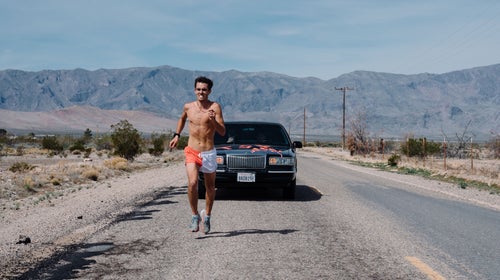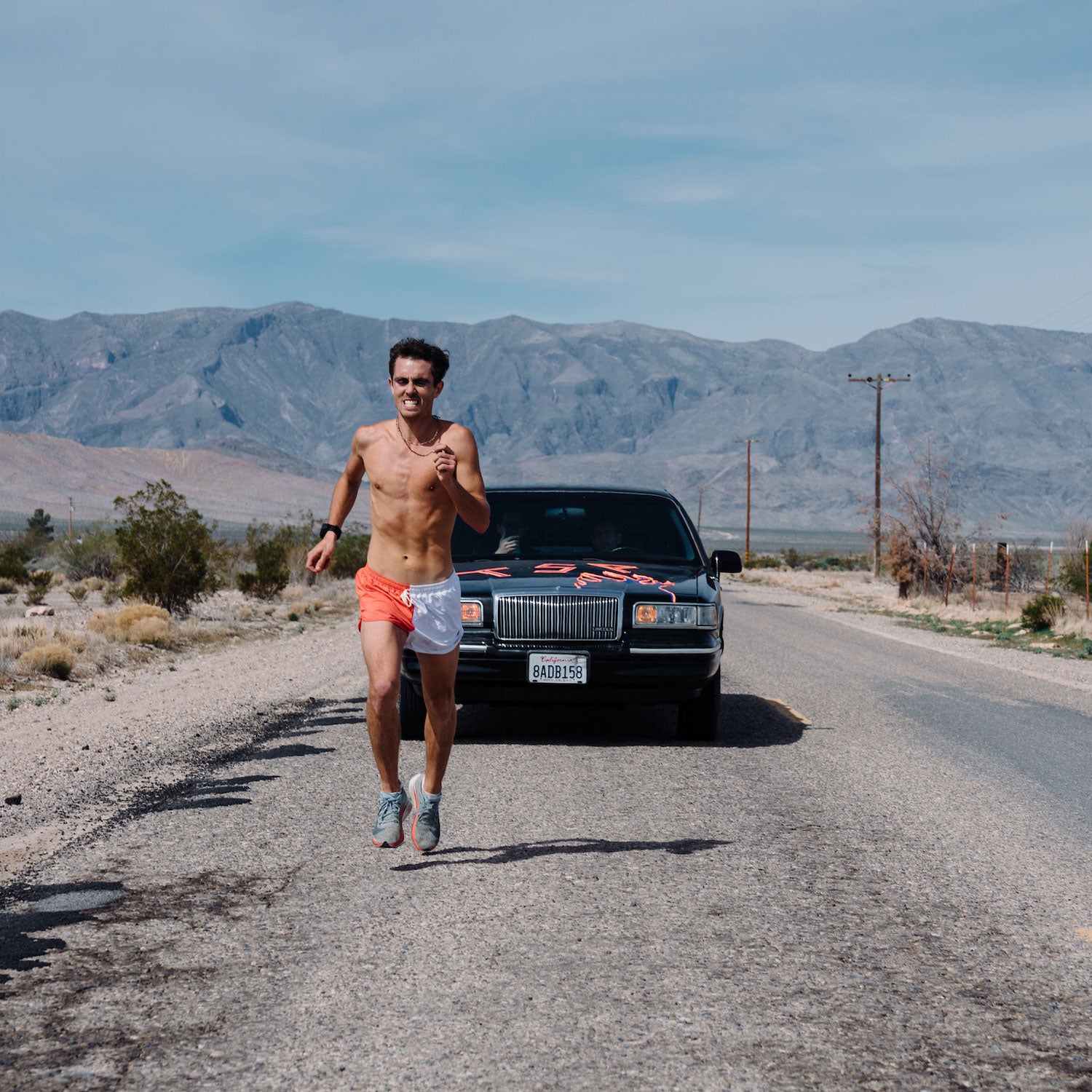I’m hardly the first person to point it out, but in today’s running scene, amateur athletes are gaining visibility as ambassadors for the sport. Blame it on social media, or repeated instances of self-sabotage on the professional end of the spectrum. Either way, one could argue that many of running’s most compelling personalities are not Olympians or national record holders, but those who bust out 100-mile weeks while holding down day jobs. These civilian superstars are injecting the sport with a new energy and—dare I say it—even a dash of cool.
This came to mind last Friday evening, when I visited a pop-up exhibition in New York’s Lower East Side neighborhood. The event was sponsored by Tracksmith and featured photographs from a company team’s recent participation in the Speed Project—an unsanctioned relay race from the Santa Monica Pier to the Vegas Strip where teams are limited to only six runners. Other than that, there aren’t too many rules. Titled “Heaven or Las Vegas,” the exhibition doubled as a launch party for a new Tracksmith apparel line, which had been wear-tested during the 340-mile journey across the California desert. Welcome to the brave new world of sportswear marketing.
Initially, Tracksmith had only intended to use the Speed Project as the setting for its summer catalogue shoot. But then the race ended up providing more drama than anticipated. The six Tracksmith runners—two women, four men, all of whom are sub-elite caliber athletes—found themselves in a close battle for the course record with a French team called the Sun Chasers. Adding to the intrigue was the fact that one of Tracksmith’s runners had to be taken to the E.R. with heat exhaustion, leaving them a man down for much of the race. In the end, the Sun Chasers would prevail by a razor margin of ten minutes. Nonetheless, the Speed Project experience was so riveting that Tracksmith thought it warranted its own exhibition.
“You have an affection for the people you’re photographing, but you also kind of want them to suffer—because that’s what they’re going through and you know it’s a beautiful moment,” says Emily Maye, a photographer who embedded with the Tracksmith crew for the duration of the Speed Project. Maye, who previously spent three years as a staff photographer on a professional cycling team, is a veteran at capturing such moments. Her Speed Project photos depict both the tortured euphoria of (very) long distance running, as well as the hallucinatory weirdness of an event that one Tracksmith support crew member described to me as “Burning Man for runners.”
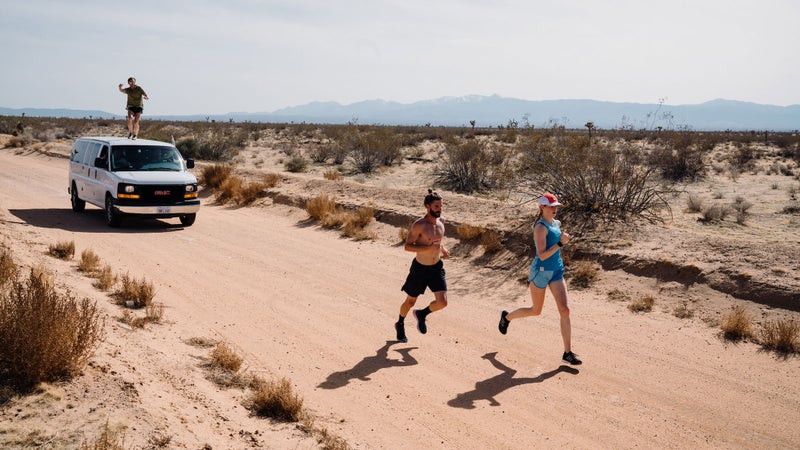
There may have been even more weirdness than usual in 2018. Speed Project founders Nils Arend and Blue Benadum made a habit of showing up in a black limousine at random moments along the course. In one of Maye’s pictures, a runner is gritting his teeth midstride while, a few feet behind him, the limo creeps along in ominous pursuit, a ghostly white hand visible in the car’s tinted windows. In another photo, Peter Bromka, the ill-fated member of team Tracksmith who succumbed to heat exhaustion, is sitting alone, at night, on a bench outside a highway rest stop. The image has a strong Edward Hopper vibe, and reflects that familiar state of utter enervation. This, too, is the loneliness of the long-distance runner.
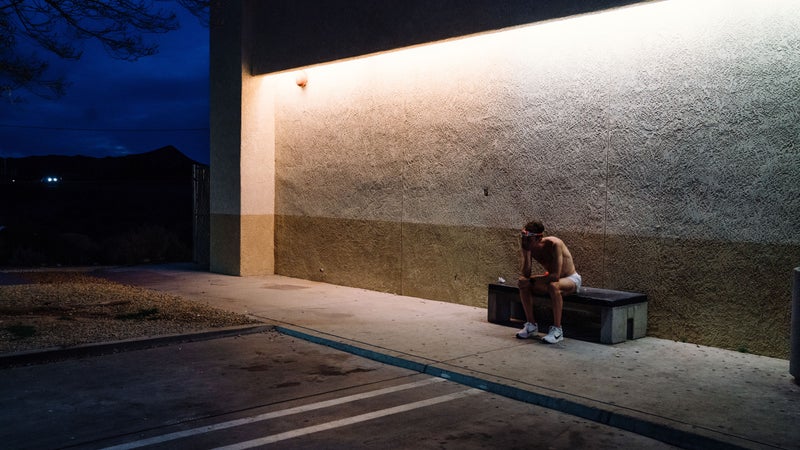
My favorite picture from the exhibit was taken more than 24 hours into the race, when team Tracksmith was still maintaining a narrow lead over their French pursuers. Dawn is breaking and Tracksmith runner David Kilgore is pushing the pace somewhere along Death Valley Road. Behind him looms of the vast landscape of the American West, as well as a pair of headlights on the horizon: the Sun Chasers are closing in. Kilgore’s face has the maniacal look that you’d expect on someone who has been running intermittently for over 24 hours. There also appears to be a trace of fear. For me, the picture captures the atavistic dread that’s so core to the running and racing experience. You’re in pain, and yet you continue to run because you know you’re being chased.
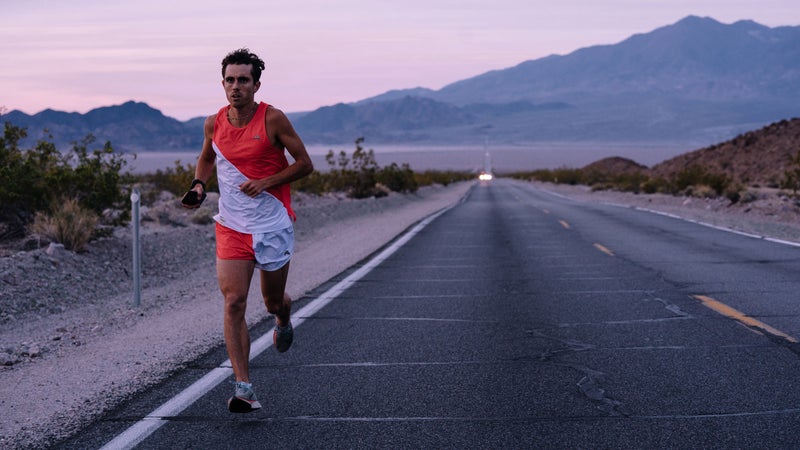
I only learned about the Speed Project early last year, when I joined Arend and Benadum for a Sunday long run on their home turf in Santa Monica. At the time, I told Arend that his event sounded similar to Hood to Coast, the long-standing relay event up in Oregon. He looked at me with mild contempt and said, “Not really. This is more rebel-style.”
Indeed, the Speed Project ethos is resolutely non-professional. Given the whole running on the freeway thing, the enterprise is probably semi-legal, at best. There’s no official monetary reward for the winner. The heroes of the event are accomplished runners who can complete a marathon in two and a half hours, give or take, but who could never cut it on the world-elite stage.
Of course, in the age of incessant doping scandals, that elite stage has lost some of its luster. Likewise, some top professionals just fail to inspire. The competitive amateur runner, on the other hand, has the benefit of representing an ideal that is simultaneously aspirational and attainable. So much so, that even when they do something insane like run 340 miles across the desert, you see the photos and think: That could be me.
